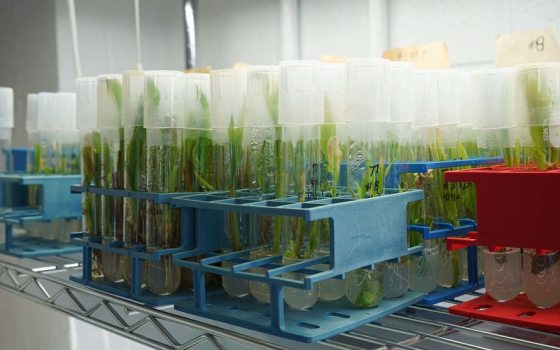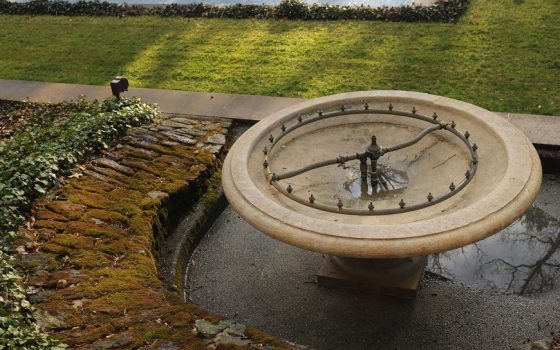With the ultimate goal of delivering innovative plants to Longwood’s displays, our Research and Conservation team functions on equal parts long-term vision and short-term problem solving. This resourceful, detail-oriented team focuses on finding and evaluating new plants, improving plant characteristics through breeding efforts and cultural techniques, pursuing plant conservation, and enhancing the sustainability of our horticulture practices. Part of the greater Horticulture department, the Research and Conservation team is vital to the growth of Longwood and the health of horticulture as a whole … and, just like many of our teams at Longwood, including the greater Horticulture department and our Facilities department, they have had to reassess priorities and make crucial changes to their operations to adapt to this time of crisis. From moving plant evaluation to a more virtual process and ensuring the utmost level of plant care given current circumstances, the team has made one thing abundantly clear: in both the short- and the long-term, the health of our plants will not waver.
The way in which the team typically works has had to shift during this time, especially since the team’s volunteers, students, and part-time staff programs have been suspended. With the temporary loss of these team members and their incredible skill sets, the Research and Conservation team is operating at about 25 percent of their normal capacity and has therefore had to work creatively with their full-time staff, including tackling some projects from home, such as cleaning test tubes, working through core collection management plans, and creating a portfolio of plants that have gone through the breeding and trial program believed to be industry-ready.
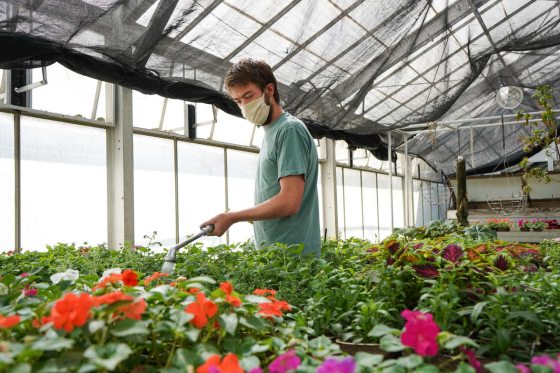
Those Research and Conservation full-time team members working onsite during the staggered schedules have also shifted their way of work. “We’ve been getting back to our roots,” explains Director of Research and Conservation Dr. Matt Taylor. “Many of us who typically find ourselves in front of a computer during a good portion of the day have found ourselves back in the lab or working closely with plants, with our hands in the soil. Getting back to those roots has been almost meditative.”
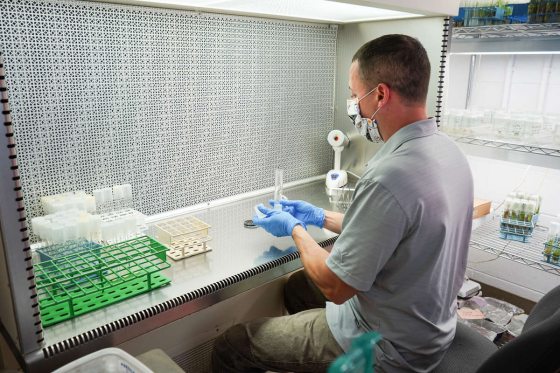
Through their work, the Research and Conservation team increases the diversity and quality of our displays by introducing new plants into our Gardens, for you to enjoy. Plants on display at Longwood have come to us from across the country and around the world, by way of discovery during plant exploration, requests by one of our staff members, or from other plant breeders. Prior to being used in our displays, all plant specimens or seeds that are new to Longwood undergo a rigorous review process to determine whether they meet our quality standards. This review process is known as a plant trial, and the team reviews an average of 500 new plants per year. Plant trials are extremely detailed processes that evaluates items such as cultural requirements, bloom time and duration, and potential invasiveness and compares trial plants to those already in use. Each trial plant is evaluated when the team feels it has reached its maximum display potential or highest aesthetic value. If a plant under trial is deemed suitable for use in display, it moves onto production and, eventually, display. If the plant is an immediate hit, it could go straight from trials into display.

During our temporary closure, plant evaluations, which typically involve a team of up to 15 Longwood staff coming together onsite to study and discuss a new plant, have had to become a more virtual process. During the temporary closure and as plants are maturing and coming into flower, the team has been relying on sharing photos and collaborating about those plants via phone or email, rather than in-person. This way, the team involves those staff that cannot be onsite at this time, given Longwood’s commitment to staggering work schedules and maintaining social distancing.
The team has also been considering fast-tracking certain plant evaluations done in-house, in order to provide plant material for our displays, as opposed to relying on buying in certain plants, as those plants—or the buying-in process, for that matter—may not be readily available upon our reopening.
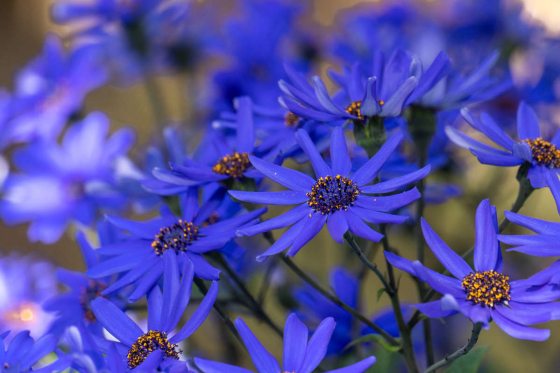
While our researchers typically spend a good amount of time in the lab and performing necessary administrative functions—including cataloguing every detail you could think of related to these plant specimens and seeds—the true laboratory in which they operate is the world around us. Many of the plants in the Research and Conservation collections come to us from plant exploration, or plant-finding trips that send our horticulturists to all corners of the world. Since 1956, we have been involved in 72 such trips to every continent excluding Antarctica, working with horticulturists worldwide to find, obtain, and trial new plants each year. These plant exploration efforts include traveling to areas of the world noted for their plant diversity and obtaining specimens in the wild, as well as obtaining cultivated species from nurseries abroad, often through cooperation with breeders and as gifts.
The plant exploration community is global by nature, as well as tight-knit. Given our current times, such travel is simply not possible. All plans for plant exploration have been put on hold for the foreseeable future, including plans for members of the team to travel to Taiwan, Uzbekistan, and China’s Hubei province this summer. The intake of new plants resulting from exploration has stopped. Shipping plant material and importing horticultural specimens—incredibly detailed processes involving USDA inspections and strict guidelines under normal circumstances—have also been put on hold.
What has not been put on hold, however, is the Research and Conservation team’s dedication to caring for the plant material already here at Longwood ... and the amount of plant material already at Longwood is massive. “A silver lining of our current situation is attributed to the fact that we’ve been so active in plant exploration these last five years, we have a wealth of research plants we can now grant even more attention,” explains Associate Director of Conservation, Plant Breeding and Collections Dr. Peter Zale. “We have not dialed back the care of these plants. In fact, that care has been one of the team’s highest priorities during the temporary closure.”
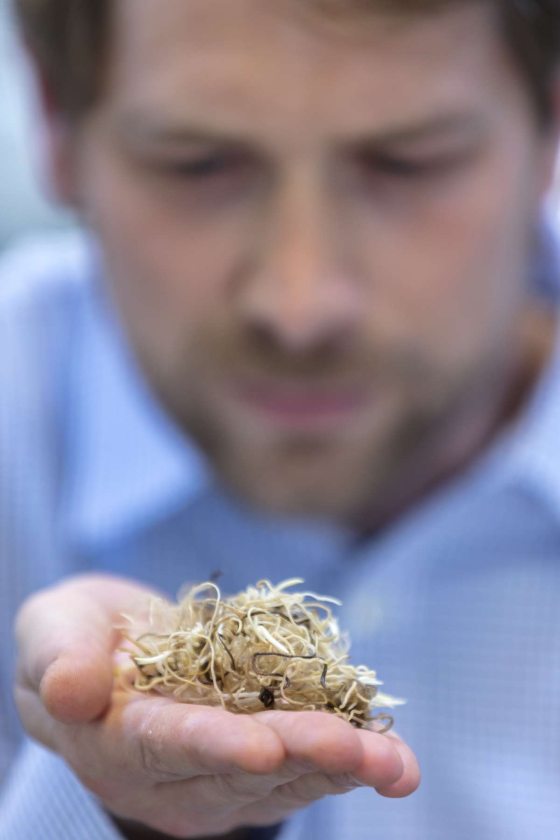
The Research and Conservation team as part of the larger Horticulture department have also called to the Longwood organization as a whole for help … a call that has been happily answered. An inter-departmental team—including those that represent departments that usually work in front of a computer rather than in the soil—has formed to help care for our Gardens, pitching in on vital projects to keep the Gardens healthy.
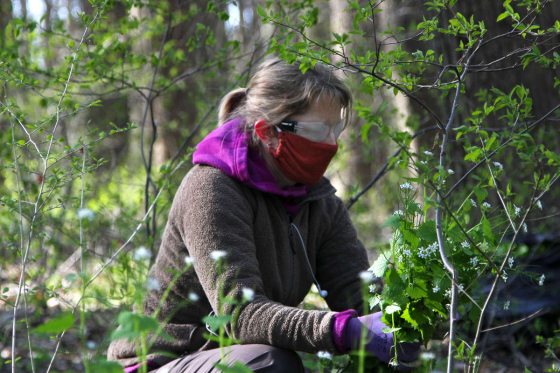
Staff in Education, Performing Arts, Marketing, Facilities, and Administration departments have all stretched, literally, in new ways. They’ve pulled garlic mustard, a non-native plant, from our forest floor; weeded beds amongst our historic trees in Peirce’s Park; cared for close to 200 bluebird boxes during nesting season; and have even taken home test tubes to clean, as well as Christmas lights to test, clean, and bundle in preparation for the holiday season, among many other cross-departmental efforts. While the work has been meditative and restorative for those doing this for the very first time, the “all hands on deck” approach is what’s truly restorative. Coming together like this not only demonstrates our dedication to our plants, our love for the Gardens, but our commitment to one another, even in the toughest of times.
